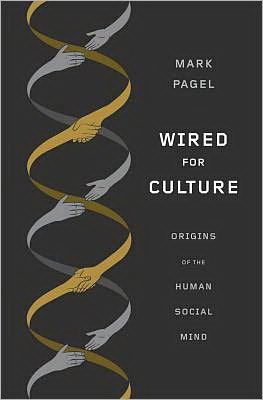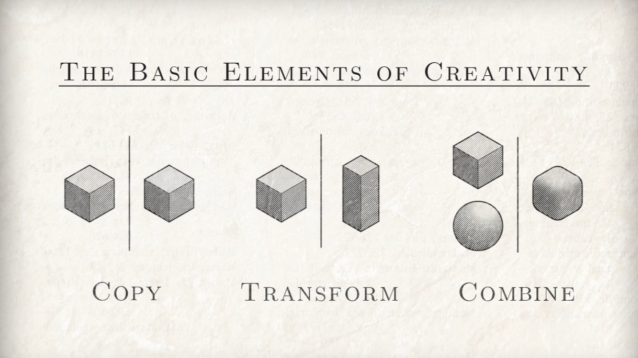The Association for Psychological Science posted this video from the APS 24th Annual Convention (2012) featuring Barry Schwartz speaking about his book, Practical Wisdom: The Right Way to Do the Right Thing.
Below the video is the first entry from the Practical Wisdom blog at Psychology Today, which offers a good overview of the book. For a shorter video, you can view the TED Talk, Using Our Practical Wisdom.
Barry Schwartz – Practical Wisdom: The Right Way to Do the Right Thing
Practical Wisdom: The Right Way to Do the Right Thing
Why neither rules nor incentives are enough to solve the problems we face.
We Americans are growing increasingly disenchanted with the institutions on which we depend. We can't trust them. They disappoint us. They fail to give us what we need. This is true of schools that are not serving our kids as well as we think they should. It is true of doctors who seem too busy to give us the attention and unhurried care we crave. It's true of banks that mismanage our assets, and of bond-rating agencies that fail to provide an accurate assessment of the risk of possible investments. It's true of a legal system that seems more interested in expedience than in justice. It's true of a workplace in which we fulfill quotas and hit targets and manage systems but wind up feeling disconnected from the animating forces that drew us to our careers in the first place.
And the disenchantment we experience as recipients of services is often matched by the dissatisfaction of those who provide them. Most doctors want to practice medicine as it should be practiced. But they feel helpless faced with the challenge of balancing the needs and desires of patients with the practical demands of hassling with insurance companies, earning enough to pay malpractice premiums, and squeezing patients into seven-minute visits--all the while keeping up with the latest developments in their fields. Most teachers want to teach kids the basics and at the same time excite them with the prospects of educating themselves. But teachers feel helpless faced with the challenge of reconciling these goals with mandates to meet targets on standardized tests, to adopt specific teaching techniques, and to keep up with the ever-increasing paperwork. No one is satisfied--not the professionals and not their clients.
When we try to make things better, we generally reach for one of two tools. The first tool is a set of rules and administrative oversight mechanisms that tell people what to do and monitor their performance to make sure they are doing it. The second tool is a set of incentives that encourage good performance by rewarding people for it. The assumption behind carefully constructed rules and procedures, with close oversight, is that even if people do want to do the right thing, they need to be told what that is. And the assumption underlying incentives is that people will not be motivated to do the right thing unless they have an incentive to do so. Rules and incentives. Sticks and carrots. What else is there?
This blog is an attempt to answer this question. In our new book, Practical Wisdom: The Right Way to Do the Right Thing, we acknowledge the need for both rules and incentives. But rules and incentives are not enough. They leave out something essential. It is what classical philosopher Aristotle called practical wisdom (his word was phronesis). Without this missing ingredient, neither rules (no matter how detailed and well monitored) nor incentives (no matter how clever) will be enough to solve the problems we face.
The term practical wisdom sounds like an oxymoron to modern ears. We tend to think of "wisdom" as the opposite of "practical." Wisdom is about abstract, ethereal matters like "the way" or "the good" or "the truth" or "the path," and it is the province of special sages. Aristotle's teacher, Plato, shared this view that wisdom was theoretical and abstract, and the gift of only a few. But Aristotle disagreed. He thought that our fundamental social practices constantly demanded choices--like when to be loyal to a friend, or how to be fair, or how to confront risk, or when and how to be angry--and that making the right choices demanded wisdom. Aristotle distilled the idea of practical wisdom in his classic book, Nicomachean Ethics. Ethics, said Aristotle, was not mainly about establishing moral rules and following them. It was about performing a particular social practice well-being a good friend or parent or doctor or soldier or citizen or statesmen--and that meant figuring out the right way to do the right thing in a particular circumstance, with a particular person, at a particular time.
This is what took practical wisdom. Aristotle's Ethics was about what we needed to learn to succeed at our practices and to flourish as human beings. We needed to learn certain character traits like loyalty, self-control, courage, fairness, generosity, gentleness, friendliness, and truthfulness--a list that today would also include perseverance, integrity, open-mindedness, thoroughness, and kindness. Aristotle called these traits "excellences" (arete)-often translated as "virtues." But the master excellence--the virtue at the heart of his Ethics--was practical wisdom. None of these other traits could be exercised well without it.
Why "wisdom"? Why "practical"? Why not just a good set of rules to follow? Most experienced practitioners know that rules only take them so far. Consider the doctor. How should the doctor balance respect for the autonomy of her patients when it comes to making decisions with the knowledge that sometimes the patient is not the best judge of what is needed? How should the doctor balance the desire to spend enough time with each patient to be thorough, compassionate, and understanding with the need to see enough patients in a day to keep the office solvent? How should the doctor balance the desire to tell patients the truth, no matter how difficult, with the desire to be kind?
Doctors--and teachers attempting to teach and inspire, or lawyers attempting to provide proper counsel and serve justice--are not puzzling over a choice between the "right" thing and the "wrong" thing. The common quandaries they face are choices among right things that clash. A good doctor needs to be honest with her patients, and kind to her patients, and to give them the hope they need to endure difficult treatments. But in diagnosing or treating a patient, these aims can be at odds, and the doctor must decide whether to be honest or kind, or more likely how to balance honesty and kindness in a way that is appropriate for the patient in front of her.
Aristotle recognized that balancing acts like these beg for wisdom, and that abstract or ethereal wisdom would not do. Wisdom has to be practical because the issues we face are embedded in our everyday work. They are not hypotheticals being raised in college ethics courses. They are quandaries that any practitioner must resolve to do her work well. Practical wisdom combines the will to do the right thing with the skill to figure out what the right thing is.
In this blog, we will describe the essential characteristics of practical wisdom, and show why it's needed to inform the everyday activities of doctors, lawyers, and teachers--parents, lovers, and friends. We will discuss some impressive examples of wisdom--and its absence-in practice. We will show that rules and incentives--the tools we reach for to improve our schools or our clinics, or even our banks--are no substitute for wisdom. Worse, they are the enemies of wise practice. And finally we will suggest that when wisdom is cultivated it is not only good for society but is, as Aristotle thought, a key to our own happiness. Wisdom isn't just something we "ought" to have. It's something we want to have to flourish. Our book makes all of these points in detail. In the blog, we will try to give you a taste of the arguments in the book.
We've been working together on practical wisdom, and teaching courses in it, for a decade. During that time, we have seen the failure of the institutions we rely on grow more acute, and the need for wisdom grow more urgent. We hope this blog will help people appreciate the central importance of practical wisdom, and induce them to ask how they can nurture it in their own lives and in the lives of the people with whom they live and work.










